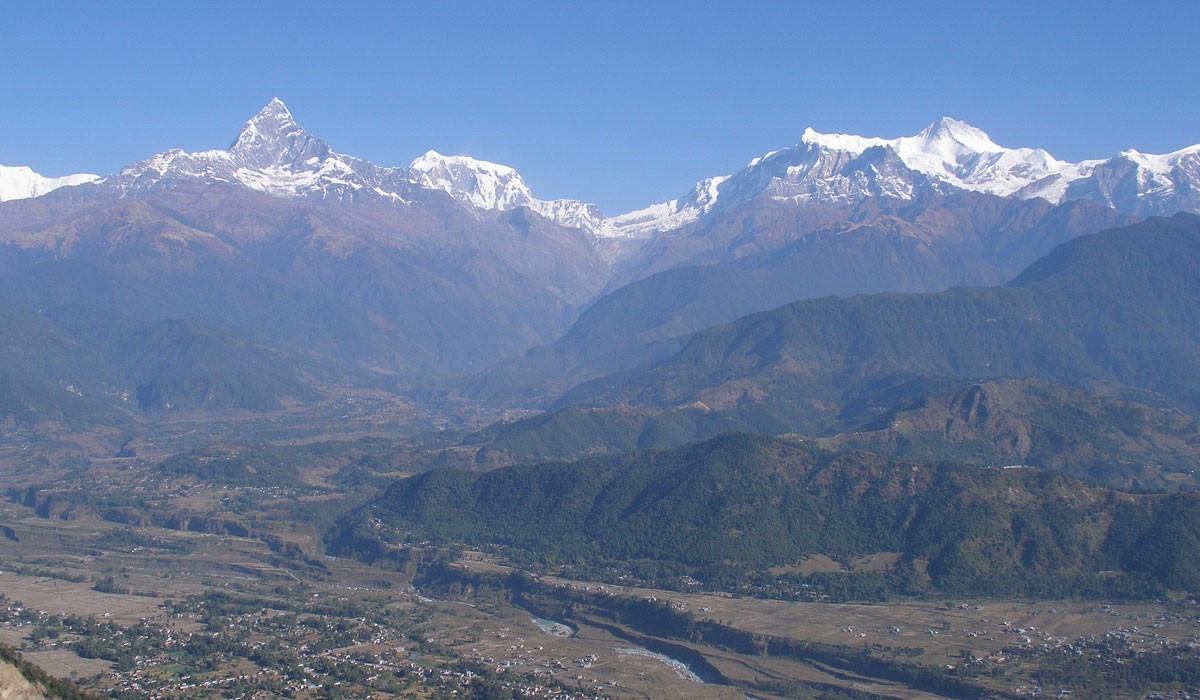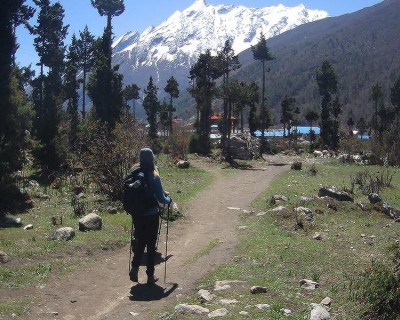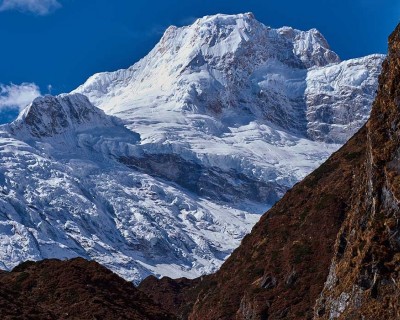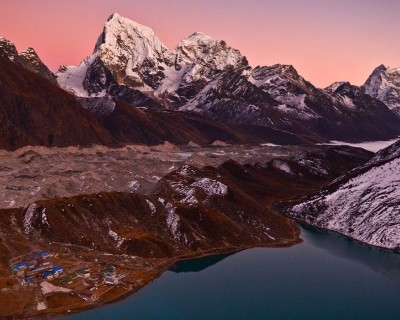Brief History
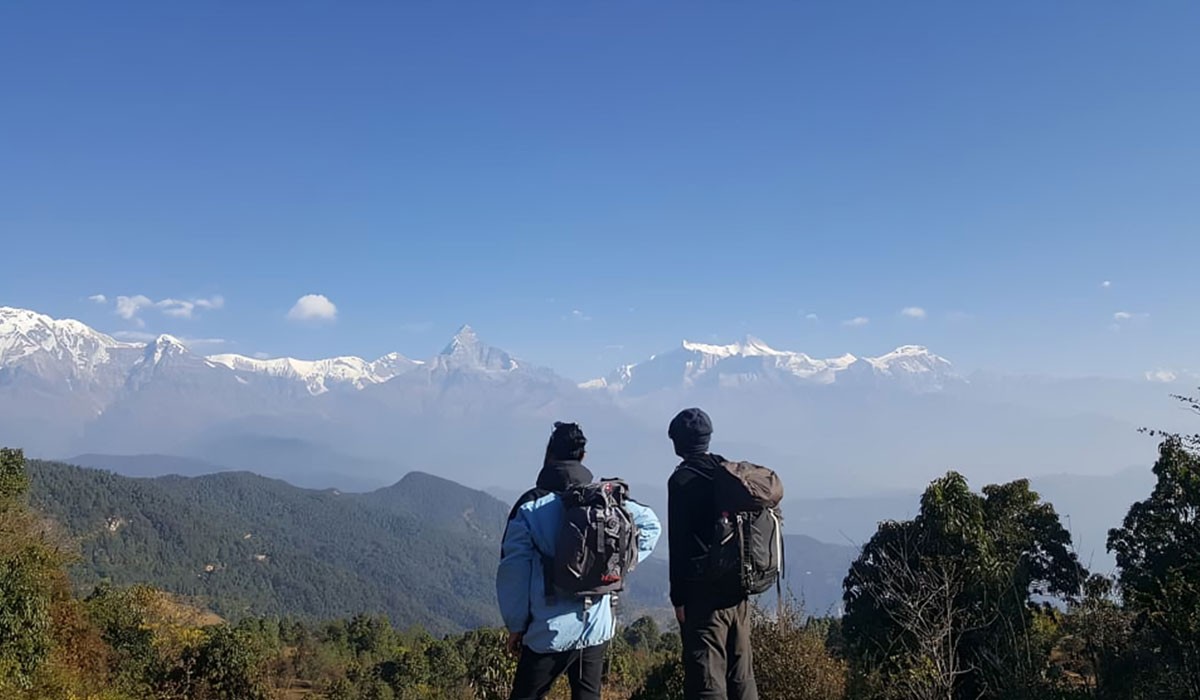
This fascinating mountain in the Nepali Himalayas is named after the Hindu Goddess of nourishment, Annapurna. The name ‘Annapurna’ refers to the Sanskrit word ‘Anna’, which means food, and ‘Purna’ can be translated to complete.
So, this incredible peak symbolizes the food and nourishment that the Goddess Annapurna bestows upon the surrounding region. Due to its great significance for the sustenance of the valley in the region, this incredible peak is still considered a holy peak in the Himalayas, and it is still believed that the Goddess Annapurna resides in the mountain.
Standing at an elevation of 8,091 meters, the Annapurna I is the main peak and highest point of the massif. Annapurna II at 7,937 meters (26,040 feet) on the other hand is famous for its unique pyramid-like shape.
Annapurna III, at 7,555 meters (24,787 feet) above sea level, is notorious for its technically challenging slopes and is popular among experienced climbers looking for an adrenaline rush. Annapurna IV (7,525 meters), on the other hand, is more of rock climbing challenging due to its sharp ridges and jagged rock faces.
Considered one of the most challenging and deadly peaks in the Himalayas, Annapurna I was successfully scaled by the French climber Maurice Herzog on 3rd July1950. However, its winter ascent was only successful in February 1987, when a Polish expedition team led by Jerzy Kukuczka reached the summit despite the challenges of the season.
What Makes Annapurna So Dangerous?
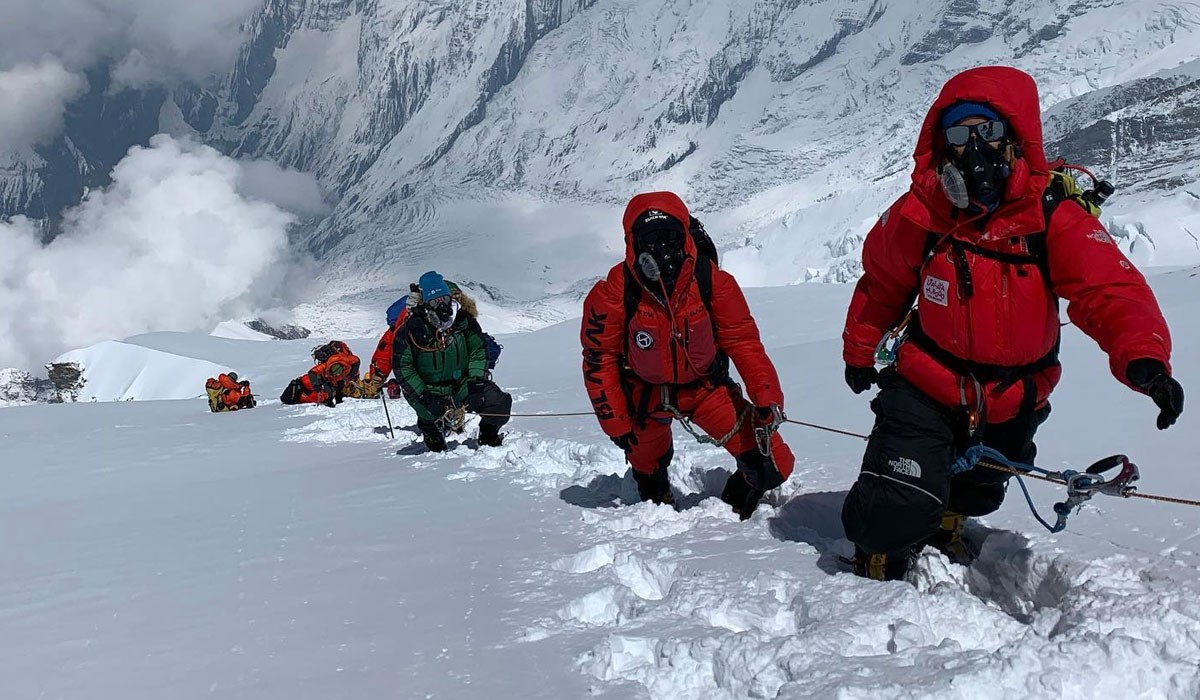
When talking about mountain expeditions, many people assume that Mt. Everest [8,848 meters/ 29,031 feet] and K2 [8,611 meters/ 28,251], the world’s highest and second-highest mountain to be most difficult for successful scaling.
But the actual stats tell a different story. The fatality rate in Mt. Everest is around 4.4%, and the fatality rate during the K2 expedition is about 13.7%. But, the fatality rate of Mt. Annapurna far surpasses both of these leading peaks in the 8,000-meter charts.
Mt. Annapurna peak has the greatest fatality rate among other mountains in the 8,000-meter class. The death ratio in the Mt. Annapurna expedition is 32%, which means there are 32 deaths on the slopes of the mountain per 100 successful summits.
That’s why this eighth-highest snow peak in the world has been labeled as the ‘Deadliest Mountain to Climb’ by the Guinness World Records. But, despite its high fatality rate, it is still one of the most popular peaks for expeditions in the 8,000-meter class.
Physical Features
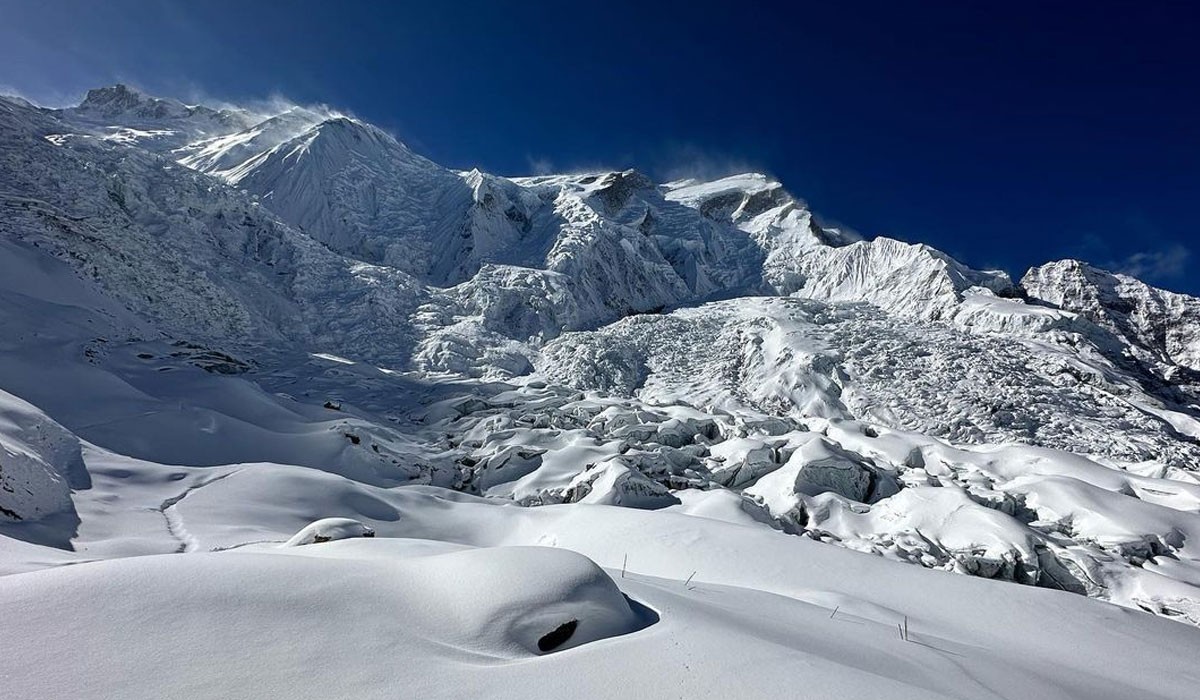
The Annapurna Mountain range is situated in the north-central part of the country. This mountain forms a ridge about 55 km (34 miles) between the gorge of Kali Gandaki on the west side and Marsyangdi on the east.
Annapurna Massifs contains four main summits; Annapurna I and Annapurna II are situated on the west and eastern end of the massifs. Meanwhile, Annapurna III and Annapurna IV are located between those two summits.
The top summit part of the Annapurna region is formed of limestone like other Himalayan peaks like Dhaulagiri and Everest. That is why the Himalayan peaks are believed to have emerged from the ocean floor, pushed by the tectonic plates.
This incredible massif is protected in the Annapurna Conservation Area, the largest conservation area in the entire country that was founded in 1985. The Annapurna region also boasts some of the highest glacial lakes and is also home to the highest lake in the world, Tilicho Lake [4,919 meters/ 16,138 feet].
Popular Trekking Region
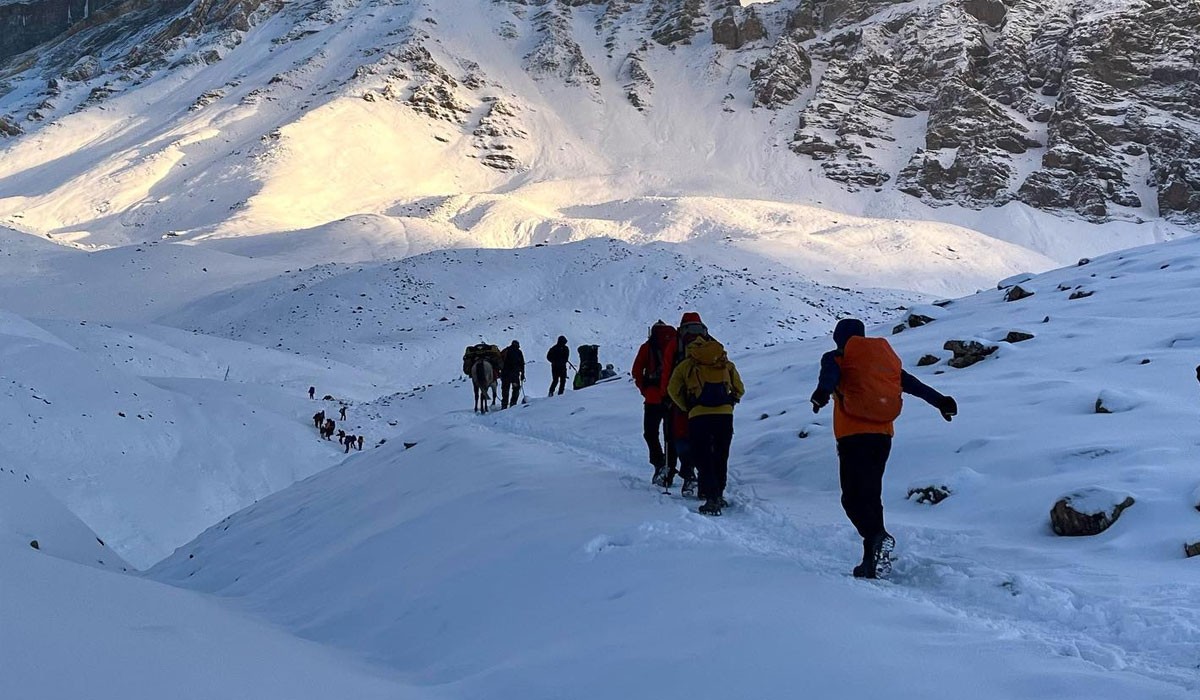
Although the expedition to this magnificent peak in the Himalayas is considered the hardest, the Annapurna region in itself is a major destination for trekking adventures. Thanks to its natural allurements and incredible trekking routes, the exploration prospects of this region are boundless.
Dubbed the ‘Second Mainstream Trekking Destination in the Himalayas,’ the Annapurna region just falls behind the highest base camp trekking adventure in the world, Everest Base Camp Trek.
If you are not such a big fan of the strenuous mountain expedition to reach the summit of Mt. Annapurna, you will still be able to immerse in the magical vibrance of this incredible peak, thanks to the numerous trekking prospects.
The Annapurna region boasts fascinating trekking trails that suit the palate of any kind of trekking enthusiast. Be it a mild exploration to the base of the mountain, overcoming a challenging Himlayan pass, or just relishing a culturally enthralling trail, the magnificent Annapurna region doesn’t disappoint anyone at all.
Popular Treks in the Annapurna Mountain Range Region
Here are some of the most popular and loved trekking packages in the Annapurna region that have been a favorite among trekkers all around the world.
Annapurna Circuit Trek
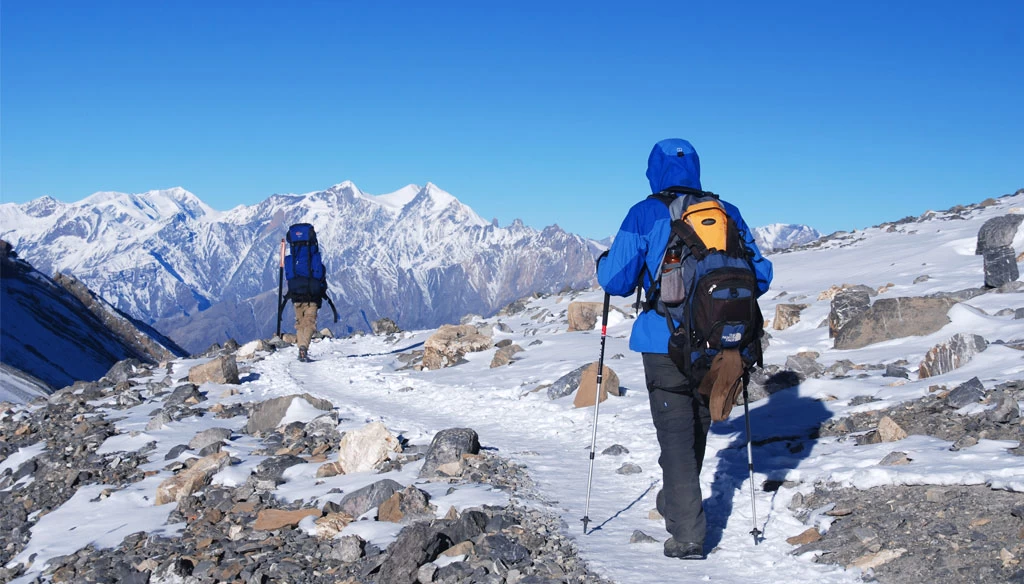
Undoubtedly, the Annapurna Circuit Trek 12 days itinerary takes the first spot when it comes to exhilarating trekking adventure in the region. This incredible Himalayan trek circumnavigates the base region of the Annapurna Mountain Range, traversing across diverse landscapes, protected areas, and the traditional settlements of Gurung, Magar, Thakali, and Tamanag.
Annapurna Circuit Trek starts with the exciting Kathmandu to Ngadi (930m/3,051ft) drive. Then, following the trekking trail up ahead, you will then trek across the charming settlements of Chamje (1,410m/4,625ft), Bagarchhap (2,160m/7,086ft), Chame (2,710m/8,891ft), and Lower Pisang (3,240m/10,629ft).
The destinations like Manang(3,540 m/11,614ft), Yak Kharka (4,120m/13,517ft), Thorung Phedi (4,560m/14,960ft) are the high elevation points in this adventure. You will cross Thorong La Pass (5,461m/17,916ft), the highest elevation point in this trek. Then, you will move along with the descending route across Muktinath (3,802m/9,192ft), Tatopani (1,190m/3,904ft), Ghorepani (2,750m/9,022ft), Ulleri (2,050m/6,725ft), Poon Hill (3,210m/10,531ft), Pokhara (823m/2,700ft) and finally back to Kathmandu.
Annapurna Base Camp Trek
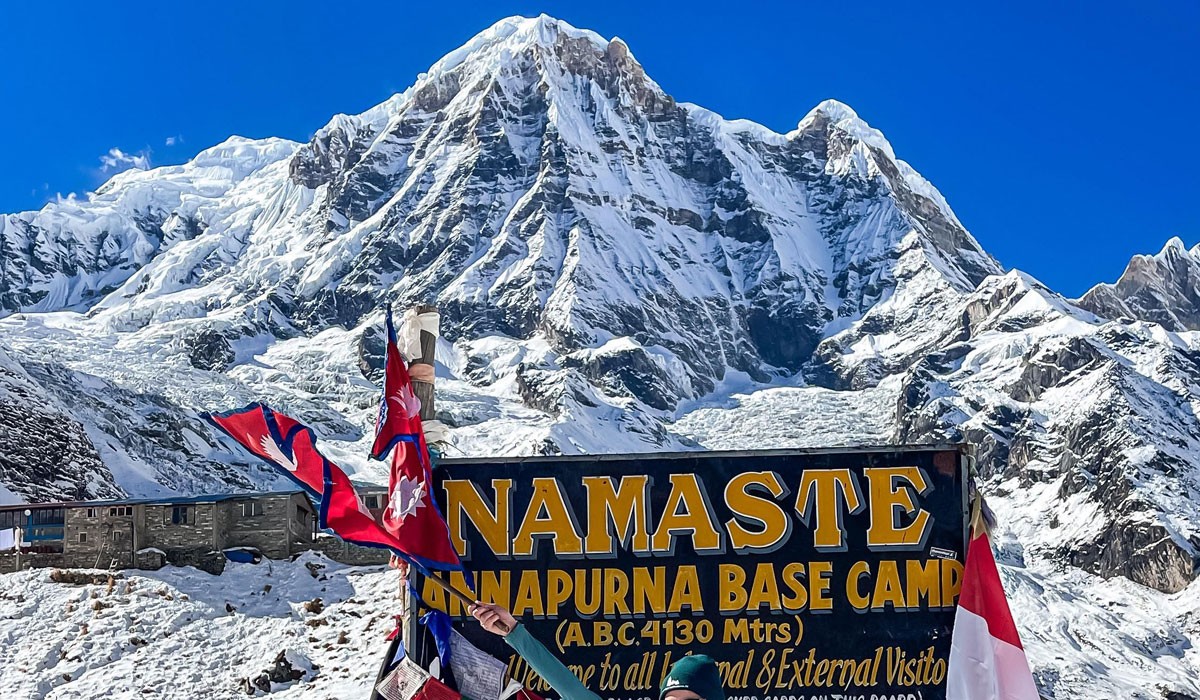
Annapurna Base Camp Trek is a milder high-altitude adventure in the region if don’t want to take on the high Himalayan pass of the circuit trekking. This fascinating trekking adventure in the Annapurna region will lead you to the base of the magnificent Annapurna Mountain Range.
This iconic exploration starts with Kathmandu to Pokhara drive. Then starting the trek from Nayapul (1,010m/3,313ft), you will follow the classical route across Tikhedhunga (1,570m/5,150ft), Ghorepani (2,840m/9,317ft), Poon Hill (3,210m/10,531ft), Tadapani (2,610m/8,562ft), Chomrong (2,140m/7,020ft), Dovan (2,500m/8,202ft), Machhapuchhre Base Camp (3,700m/12,139ft), Annapurna Base Camp (4,130m/13,549ft).
Then, descend across Bamboo (2,345m/7,693ft) Jhinu Danda (1,780m/5,839ft) and retrace steps back to Nayapul for a drive back to Pokhara.
Mardi Himal Trek
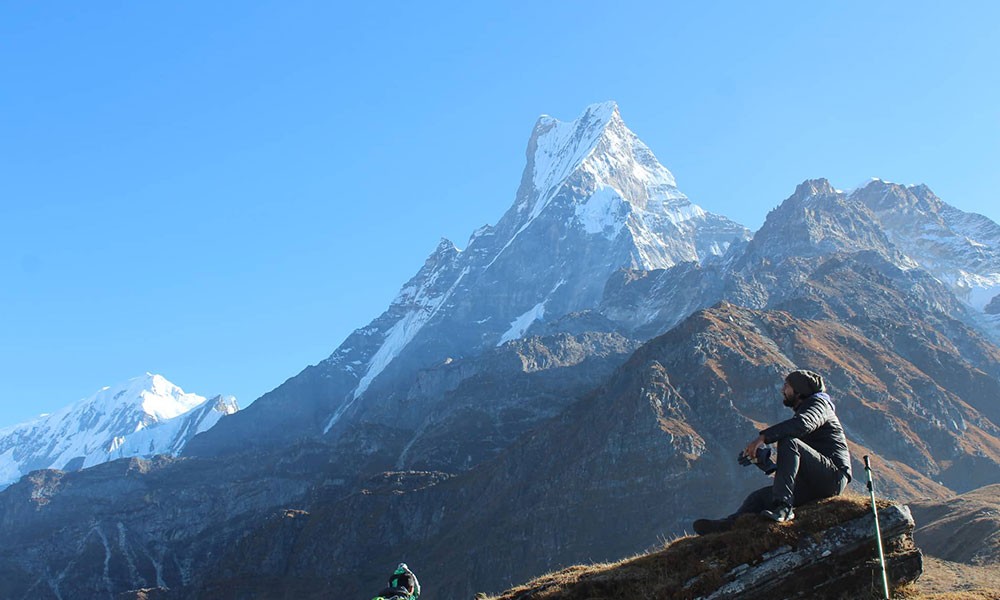
Mardi Himal Trek is another exciting trekking adventure in the Annapurna region that leads to the foothills of Mardi Himal [5,587 meters/ 18,330 feet] that is in front of the sacred Machhapuchhre [6,993 meters/ 22,942 feet].
This Himalayan trekking adventure also starts with the drive to the tourist hub, Pokhara then to Phedi (1,130m/3,707ft). Traversing across the charming trails of the second most popular trekking region, you will push for the high elevation points like Pothana (1,890m/6,200ft), Forest Camp (2,554m/8,379ft), High Camp (3,980m/13,057ft), and finally to Mardi Himal Base Camp (4,350m/14,271ft).
After exploring the base camp, you will then descend across the Siding Village (1,750m/5,741ft), Sidlaghatta, and then drive back to Pokhara.
Other treks in the Annapurna Region that you might like:
Climate of Annapurna
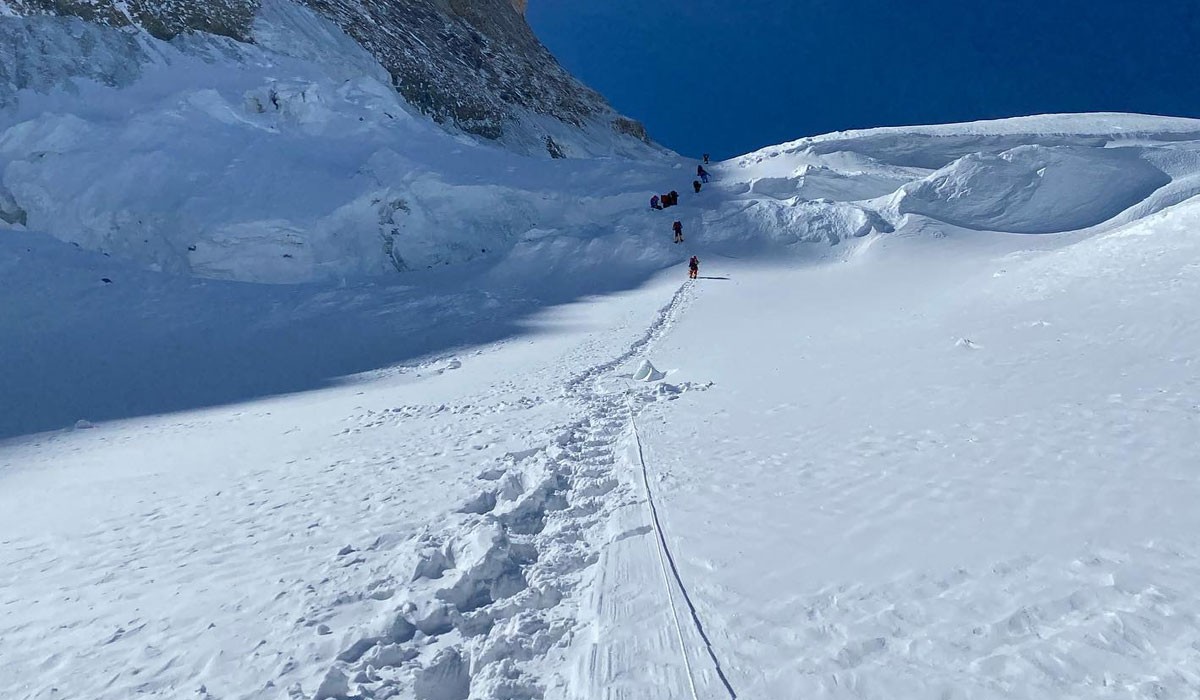
The trekking adventures and mountain expeditions in the Annapurna region are doable throughout the year. However, for the best value experience, the peak seasons like spring and autumn are the most ideal.
During these peak months, the weather is stable; days are clear and accompanied by warm temperatures. So, if you are looking for a comfortable and enjoyable experience, you should definitely go for the peak season. However, if you are seeking thrills and challenges, the off-season, like winter and monsoon, are notorious for the challenging adventures.
The spring season in the Himalayas welcomes naturally flourishing trails decorated with vibrant rhododendrons and other wildflowers. This is the best season if you are looking to add the magnificence of nature’s peak season to your exploration.
Spring season is also perfect for bird watching and wildlife exploration. The temperature of the Annapurna region during the spring season averages between 10°C to 20°C during the day. At the early mornings and nights, the temperature can drop to 5°C.
Autumn, on the other hand, is slightly chilly at the higher altitudes and accompanies trekkers with mild temperatures at the lower region. The temperature in Annapurna hovers around 12°C to 19°C during the daytime and can hit low temperatures of up to -8°C at night.
The unique grey shades of the fall season, lush terrains washed up by the monsoon downpour, clear and unobstructed views of the Himalayan massifs, and the festive ambiance are some of the highlights of this season.
Annapurna Expedition Difficulty Level
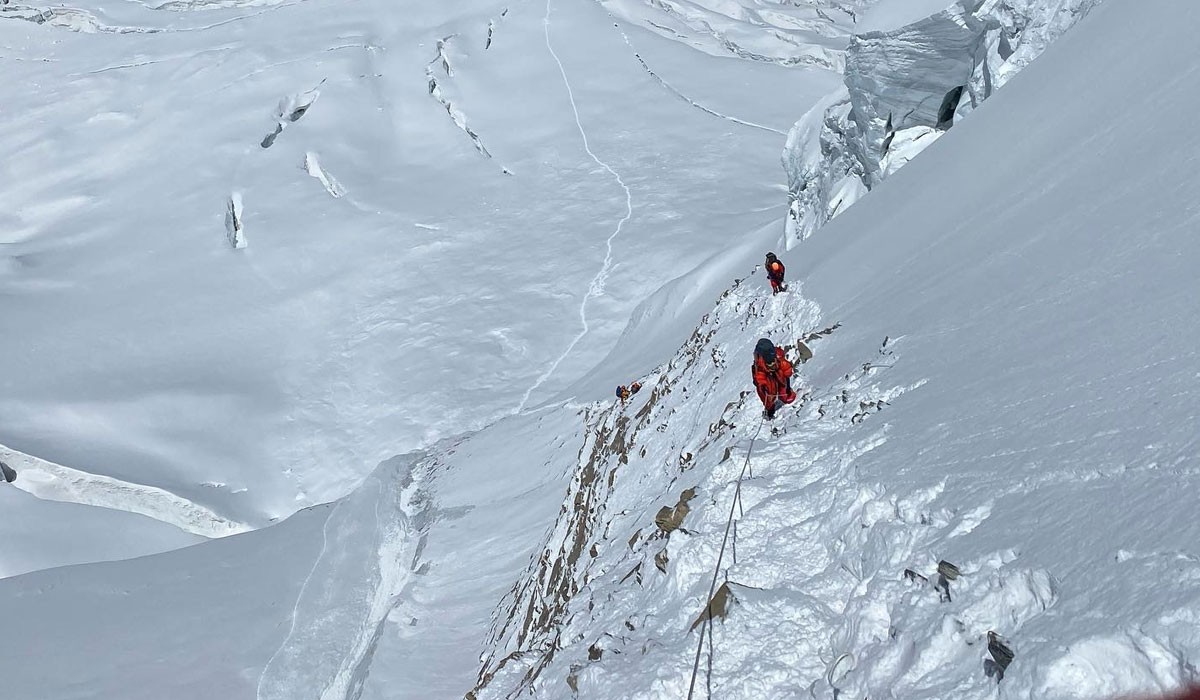
The strenuous scaling adventure of Mt. Annapurna certainly requires significant mountaineering experience and sufficient technical skills to handle the technical section of the mountain.
Compared to that, the trekking adventures under the fascinating Annapurna Mountain Range are somewhat milder explorations. Due to their ‘moderate’ grade, almost anyone can easily complete the trekking adventures in the region without any prior experience.
Annapurna Circuit Trek is only a slightly demanding trek that requires the trekkers to trek over one of the highest Himalayan passes in the region, Thorung La Pass (5,461m/17,916ft). Other than that, the circuit trek is an easy-going exploration prospect.
However, the hurdles of high-altitude Himalayan adventures, like altitude sickness, trekking distance, remoteness, climate, etc, still exist in this high-altitude exploration. So, you will still have to make appropriate preparations for the adventure.
Major Attraction in the Annapurna Region
Manang
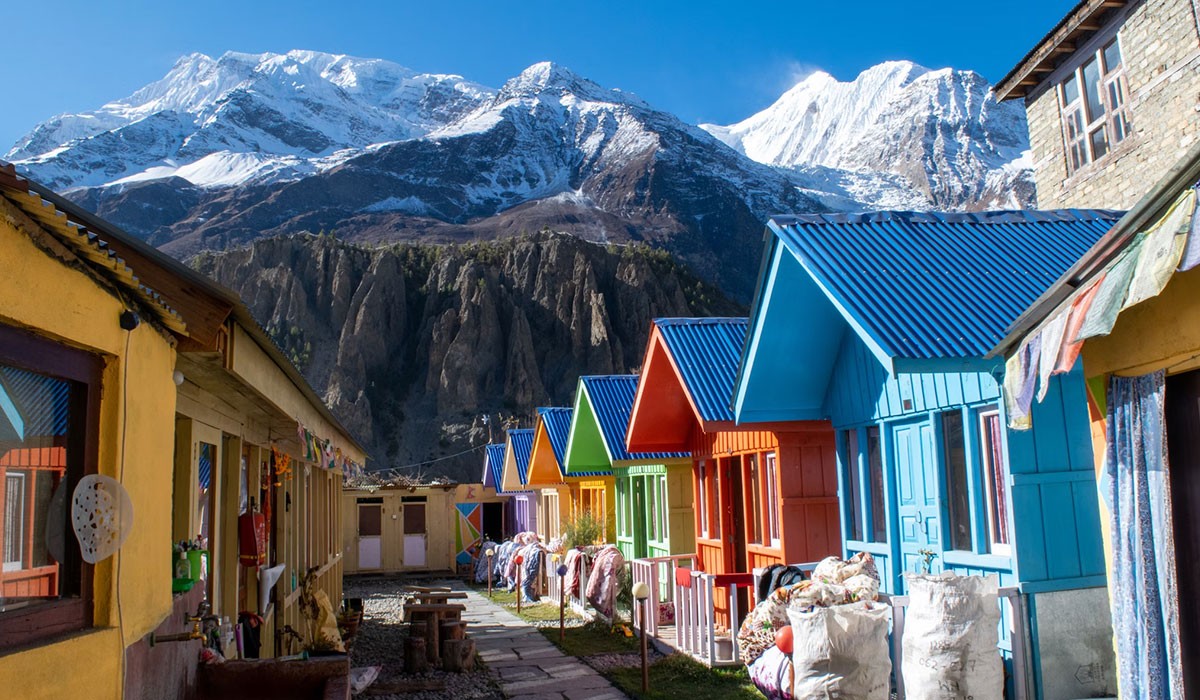
The Manang village is a beautiful high-altitude settlement that is situated inside the Annapurna region. This cultural settlement reflects the traditional lifestyle of the Nepali Himalayan region that has been massively influenced by Tibetan culture and traditions.
This magnificent rest point in the Annapurna Circuit Trek offers the opportunity to explore the incredible high Himalayan landscapes comprised of semi-dessert terrains, wide pastures, and sub-alpine forests.
Nar and Phu Valley
Nar and Phu Valleys are generally referred to as the hidden gems in the Annapurna region. Compared to other crowded parts in this mainstream trekking region, the Nar and Phu Valleys add the magnificence of solitude to your exploration.
Traversing farther from the crowded route, the exploration of these hidden valleys takes you on a journey to untouched and secluded parts of the Annapurna mountain range. You will be able to experience the authentic Tibetan culture, traditions, and architectural marvels during your trek to these valleys.
Poon Hill
Poon Hill is a famous hill station located in the Annapurna region that is known for the incredible views of the Himalayan vistas. Located close to the tourist hub in the country, Pokhara, you will be able to easily complete the hike to this vantage point in the region with a short itinerary trek.
Besides the incredible sunrise views, from the top of this hill station, you will be able to catch the incredible views of the Himalayan massifs like Annapurna, Machhapuchhre, Dhaulagiri, Dhampus Peak, Hiunchuli, Nilgiri, Tukuche Peak, Lamjung Himal and others.
Muktinath
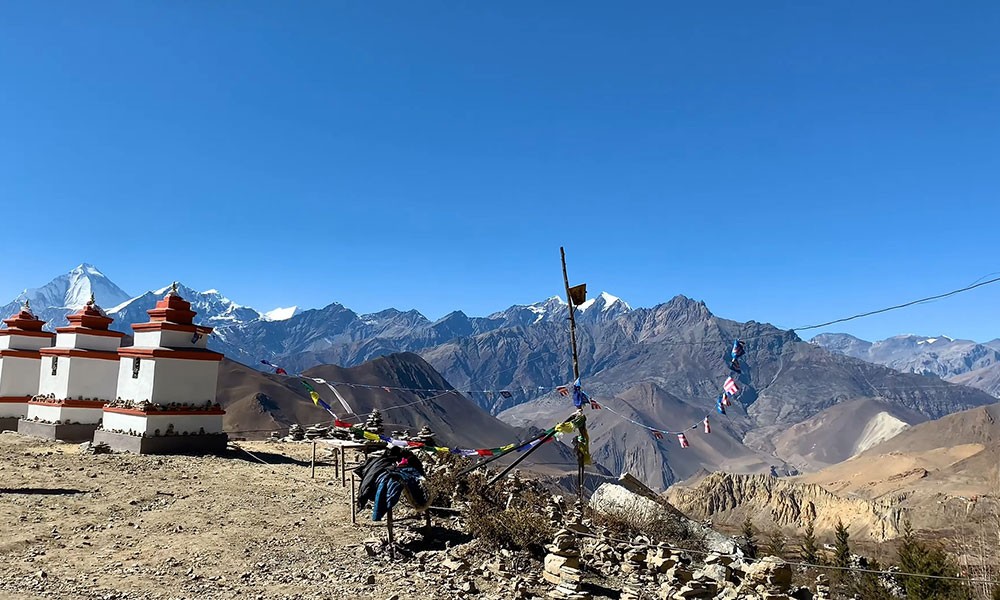
Muktinath is one of the most important religious sites in the Annapurna region that has significant value in both Hindu and Buddhist culture. This high-altitude religious landmark is also known as the ‘place of liberation,’ and it is believed that taking a bath under the 108 sprouts in this temple will liberate a person from his/her sins.
This fascinating temple dedicated to God Vishnu also houses a burning flame in a little Himalayan grotto and has been burning for more than 2,000 years.
Tilicho Lake
Tilicho Lake is the world’s highest pristine glacial lake that is located inside the Annapurna region at an altitude of 4,919 meters (16,138 feet) from the sea level. This is one of the most desired trekking destinations in the Annapurna region and is also a sacred landmark in both Hindu and Buddhist communities.
This pristine high-altitude lake is considered the Kak Bhusundi Lake from the epic Ramayana. Here, the sage Kak Bhusundi is said to have first told the king of birds, Garuda, about the events that took place in Ramayana.
